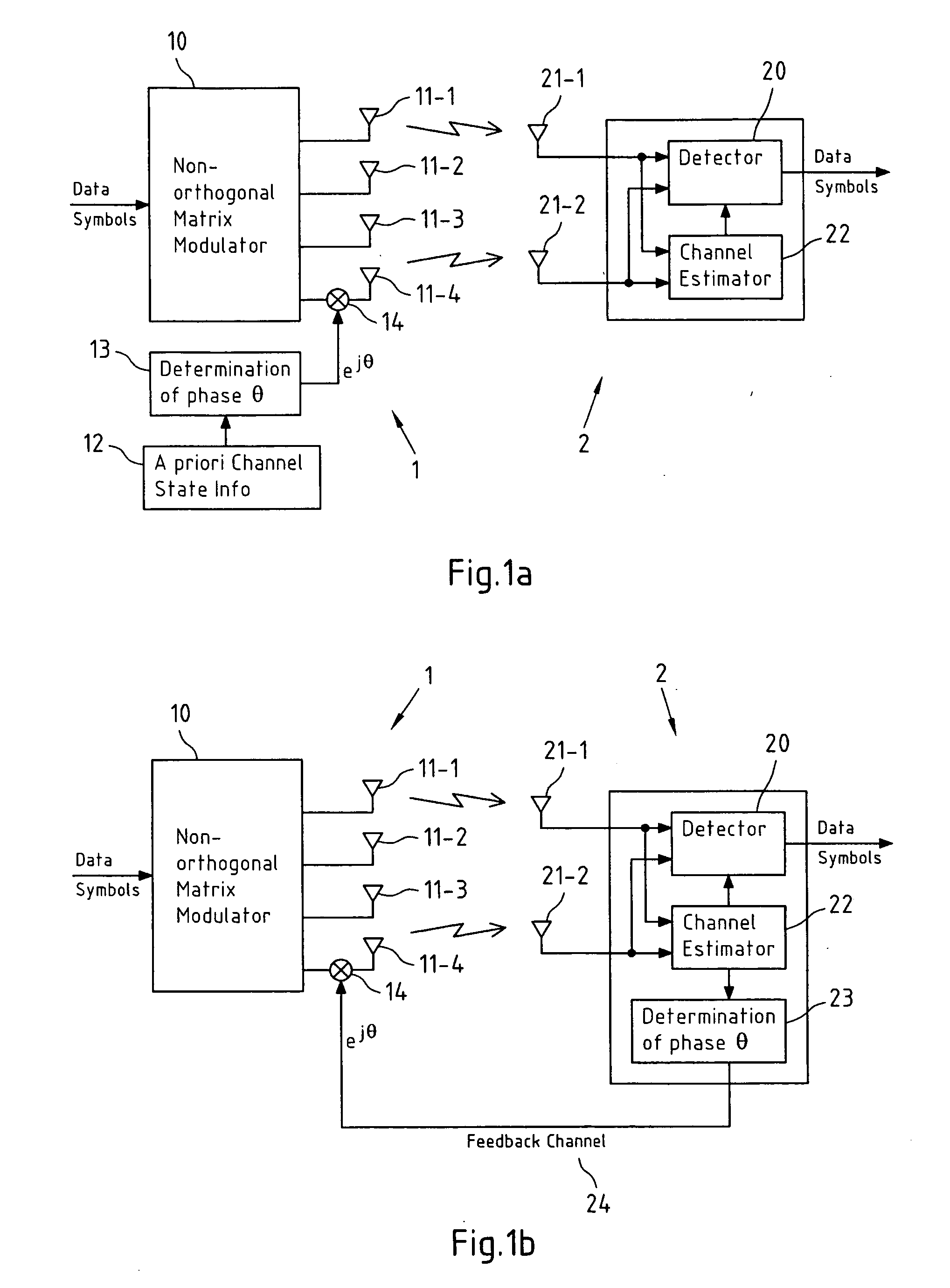Reduction of self-interference for a high symbol rate non-orthogonal matrix modulation
a non-orthogonal matrix, high symbol rate technology, applied in the direction of error prevention, digital transmission, diversity/multi-antenna systems, etc., can solve the problem of not achieving an increase in bit rate, and achieve the effect of reducing self-interferen
- Summary
- Abstract
- Description
- Claims
- Application Information
AI Technical Summary
Benefits of technology
Problems solved by technology
Method used
Image
Examples
Embodiment Construction
[0064] The present invention proposes to reduce the self-interference encountered in non-orthogonal matrix modulation with at least four transmit antennas and symbol rates equal to or larger than 2 symbols / time period by multiplying the data symbols mapped to one of said at least four transmit antennas by a factor γ that is properly determined to achieve this self-interference reduction. In the following, for illustrative purposes, the presentation will concentrate on closed-loop space-time matrix modulation. It should however be noted that the present invention lends itself for deployment in the context of all other orthogonal transmission resources such as frequency, polarization, codes or eigenmodes of a channel, and may equally well be applied in open-loop systems in which the factor γ is determined at the transmitter site.
[0065] As an example for the application of the present invention, the non-orthogonal DSTTD block code as defined in equation (9) will be considered. The equ...
PUM
 Login to View More
Login to View More Abstract
Description
Claims
Application Information
 Login to View More
Login to View More - R&D
- Intellectual Property
- Life Sciences
- Materials
- Tech Scout
- Unparalleled Data Quality
- Higher Quality Content
- 60% Fewer Hallucinations
Browse by: Latest US Patents, China's latest patents, Technical Efficacy Thesaurus, Application Domain, Technology Topic, Popular Technical Reports.
© 2025 PatSnap. All rights reserved.Legal|Privacy policy|Modern Slavery Act Transparency Statement|Sitemap|About US| Contact US: help@patsnap.com



